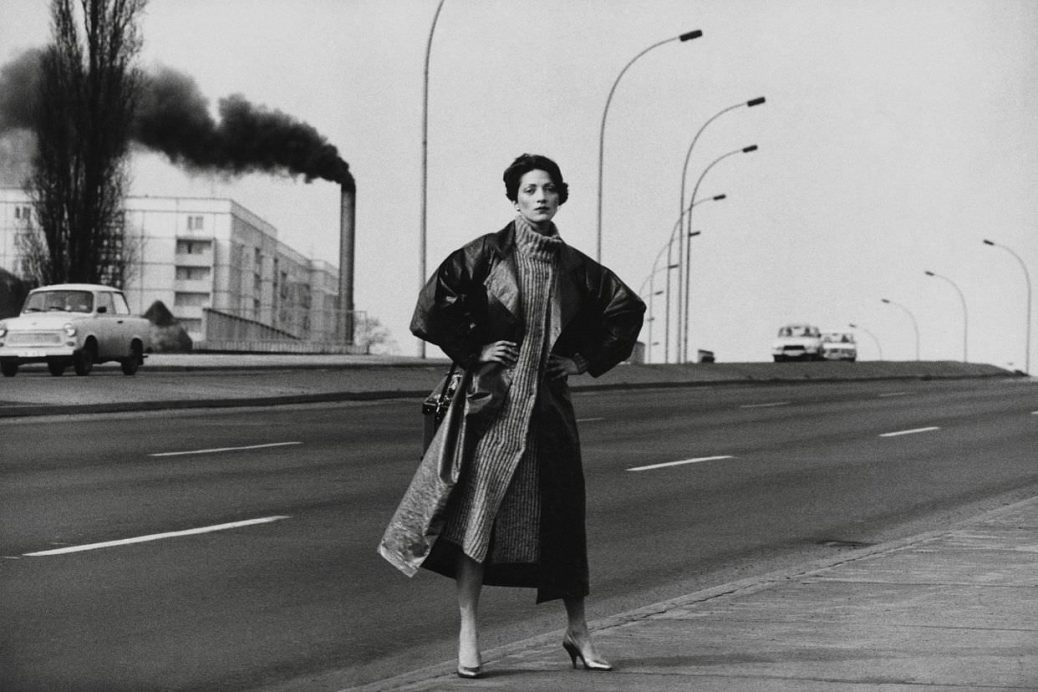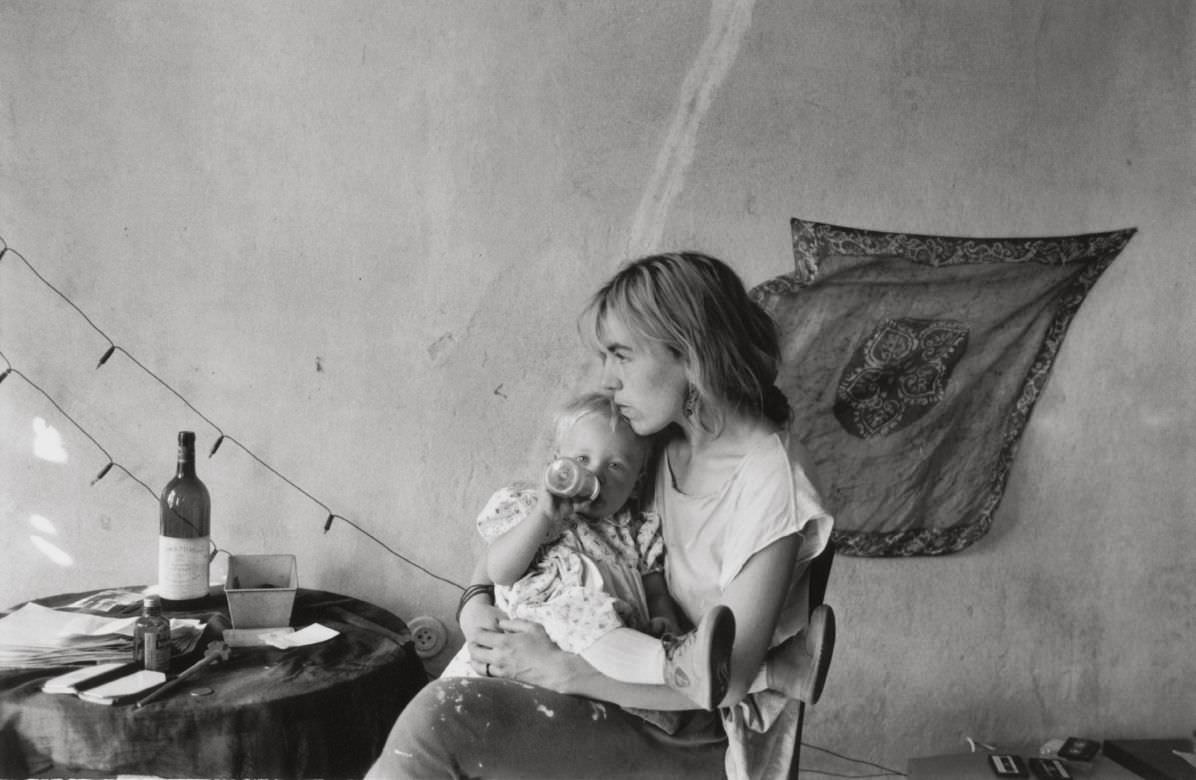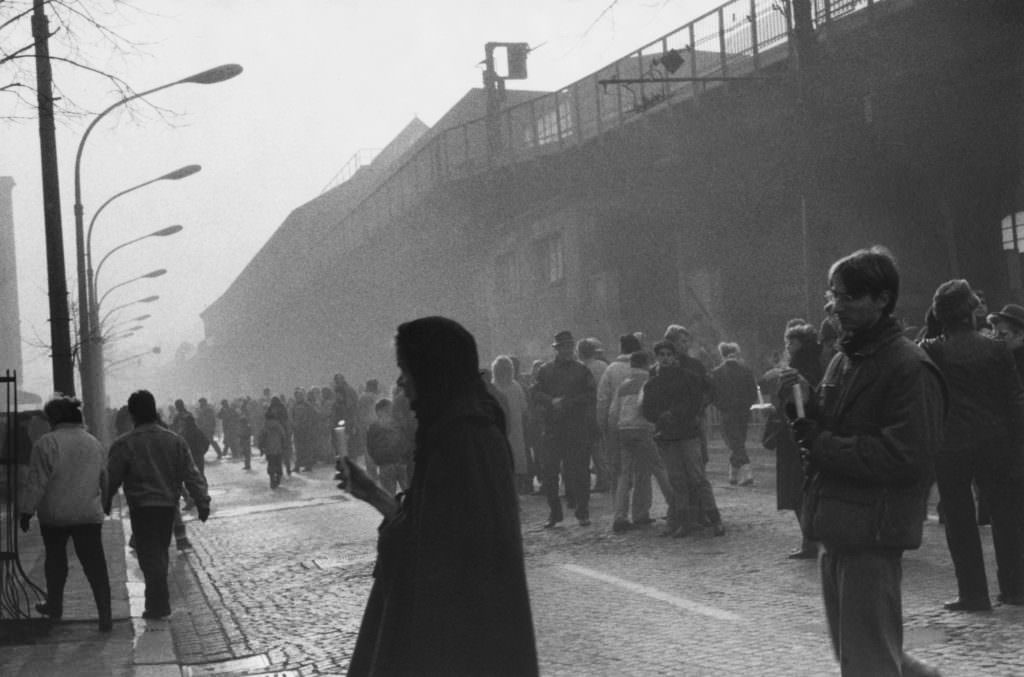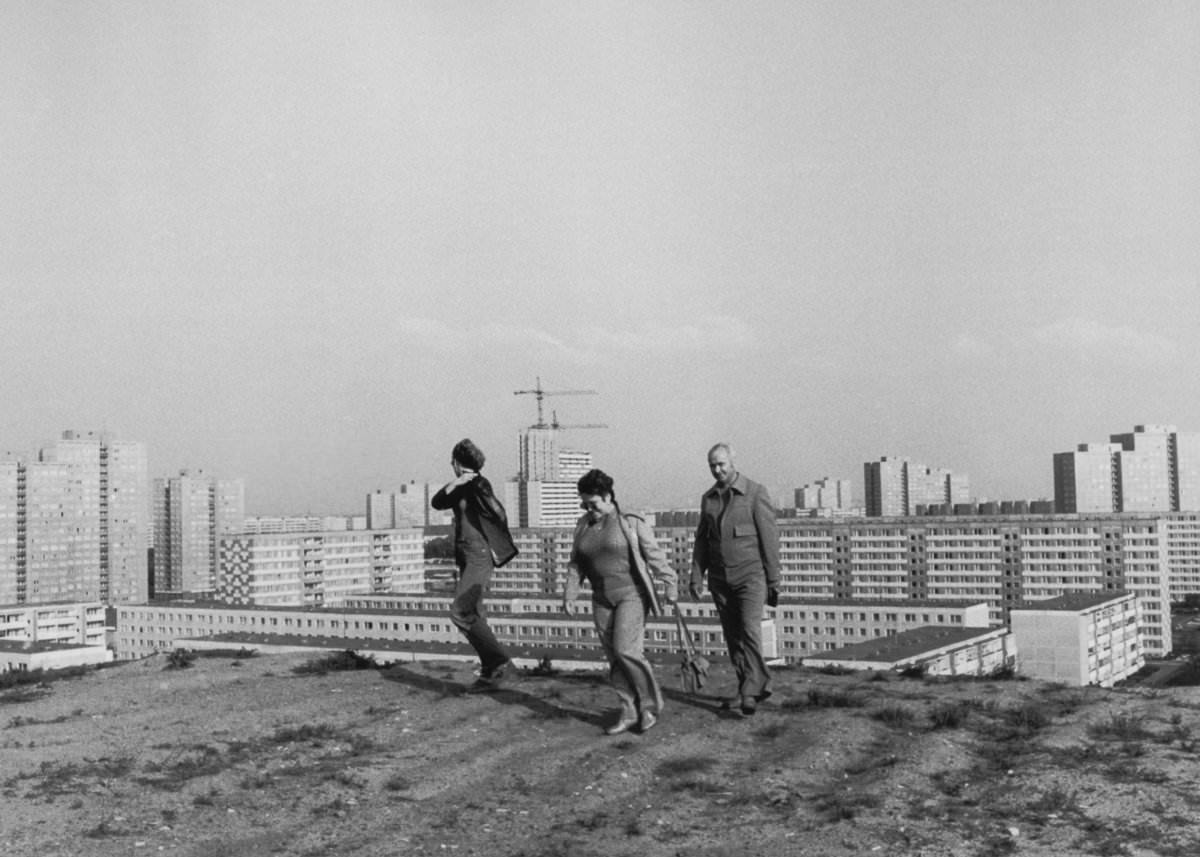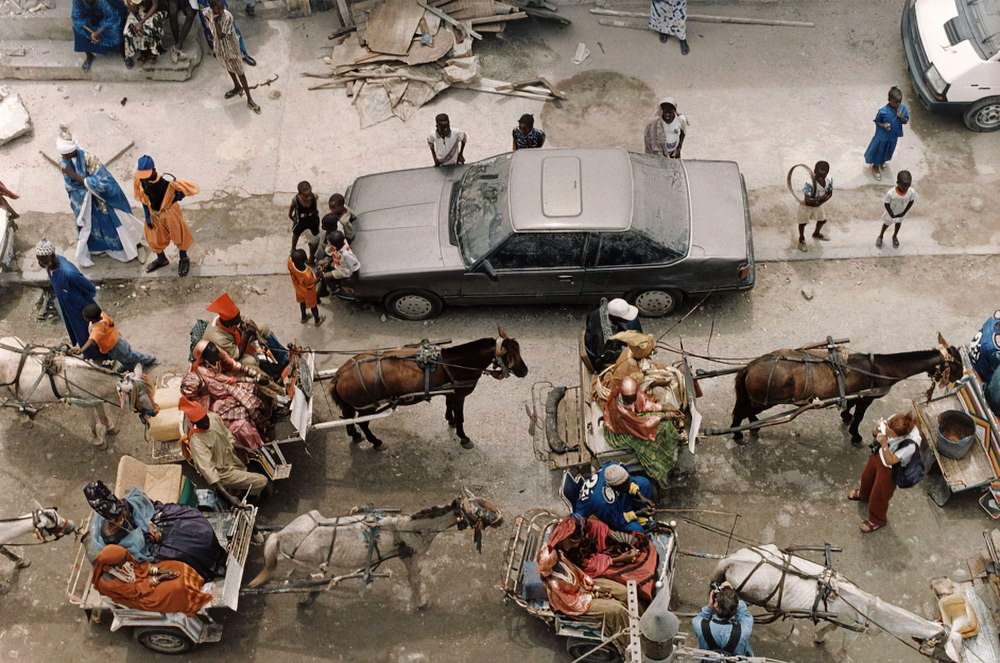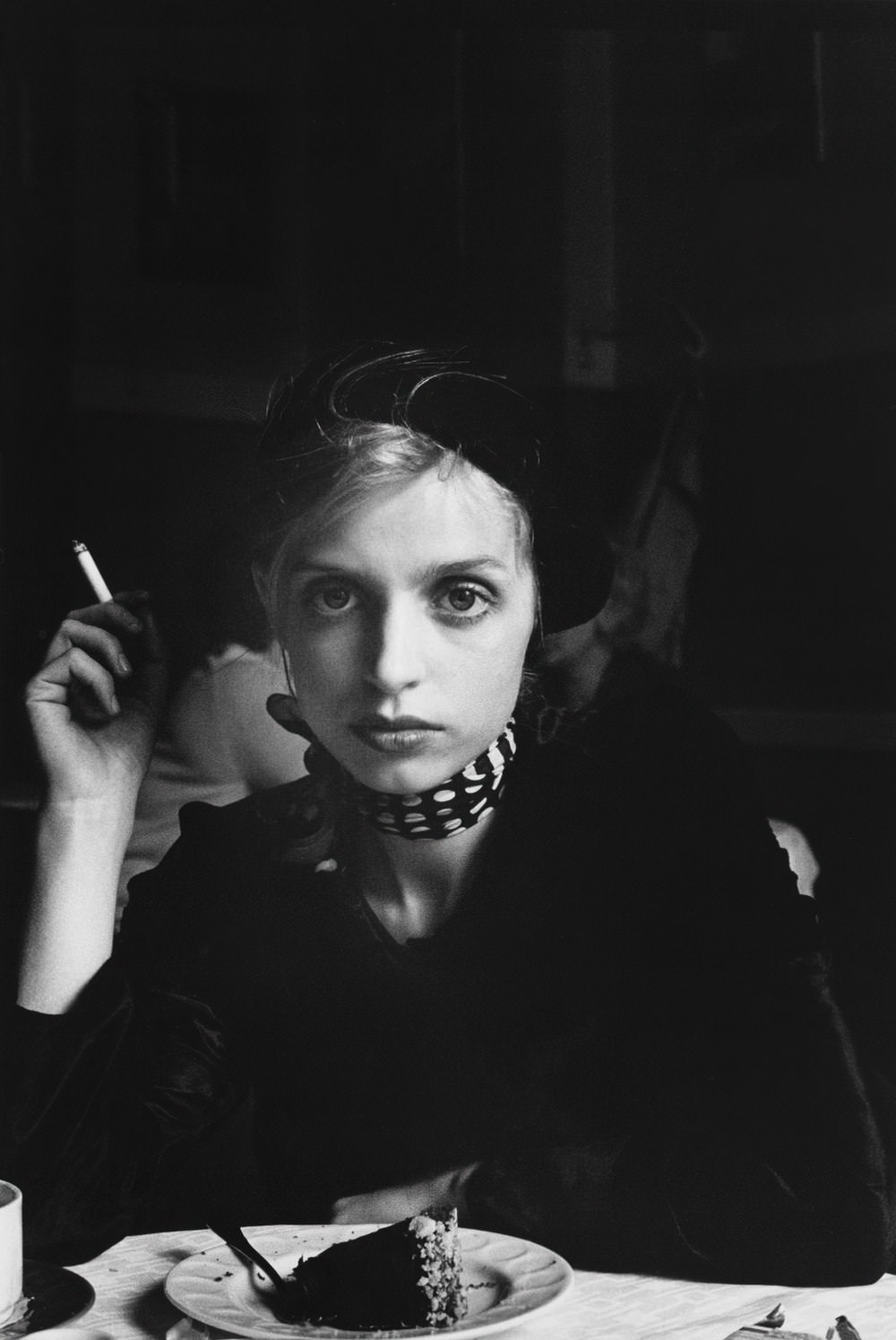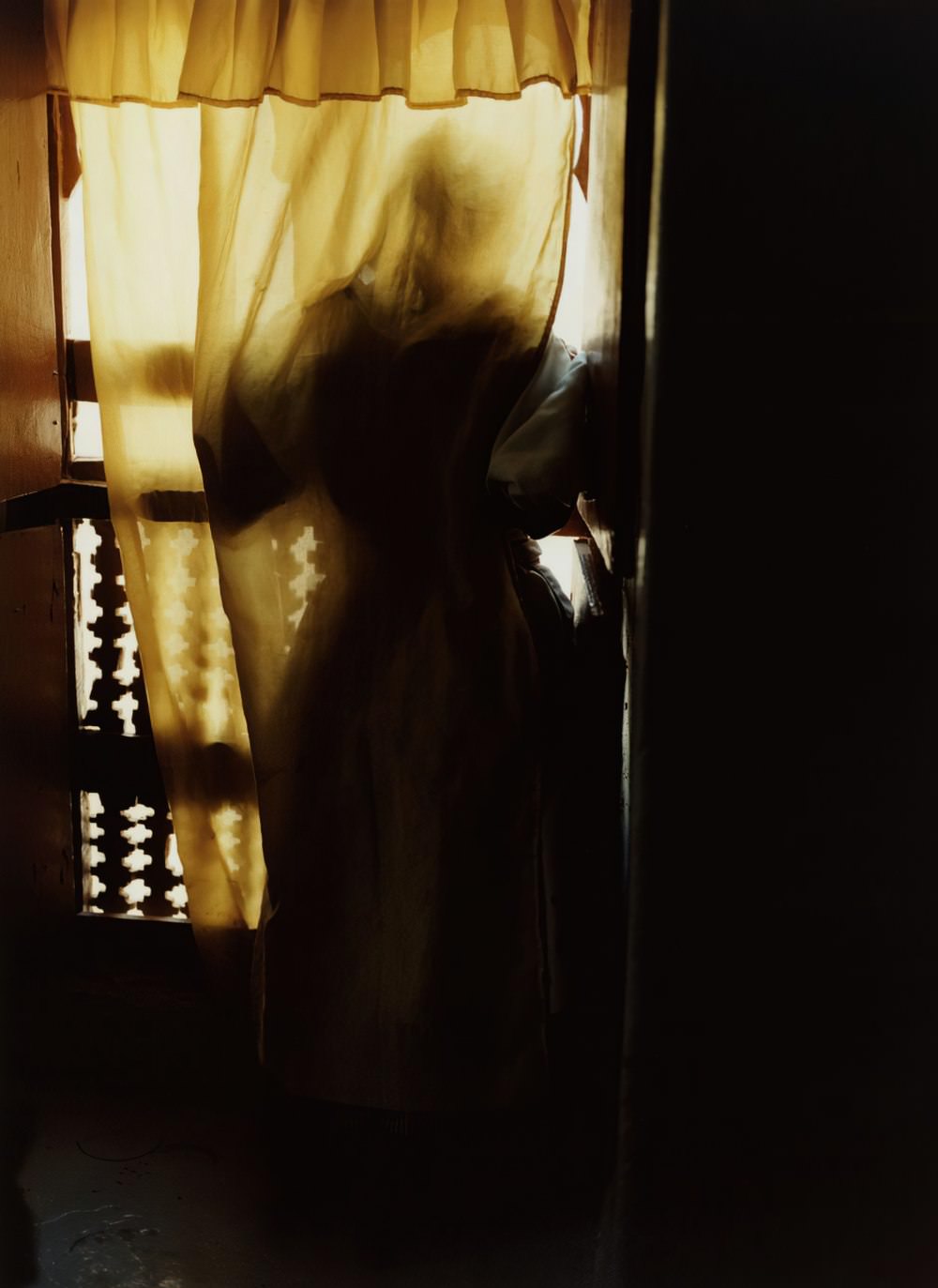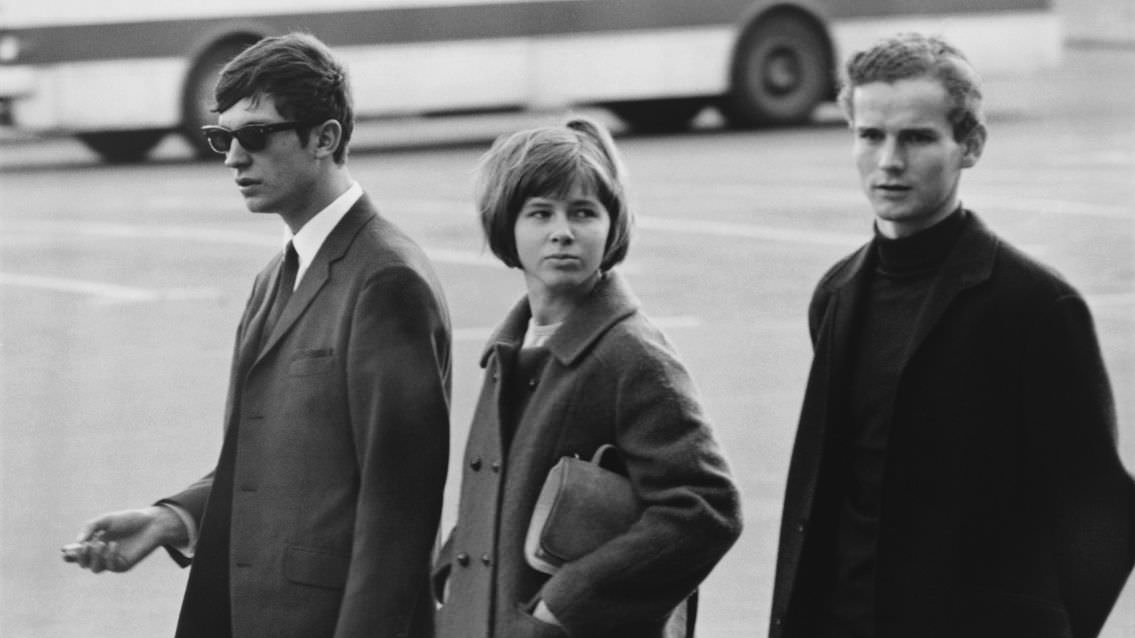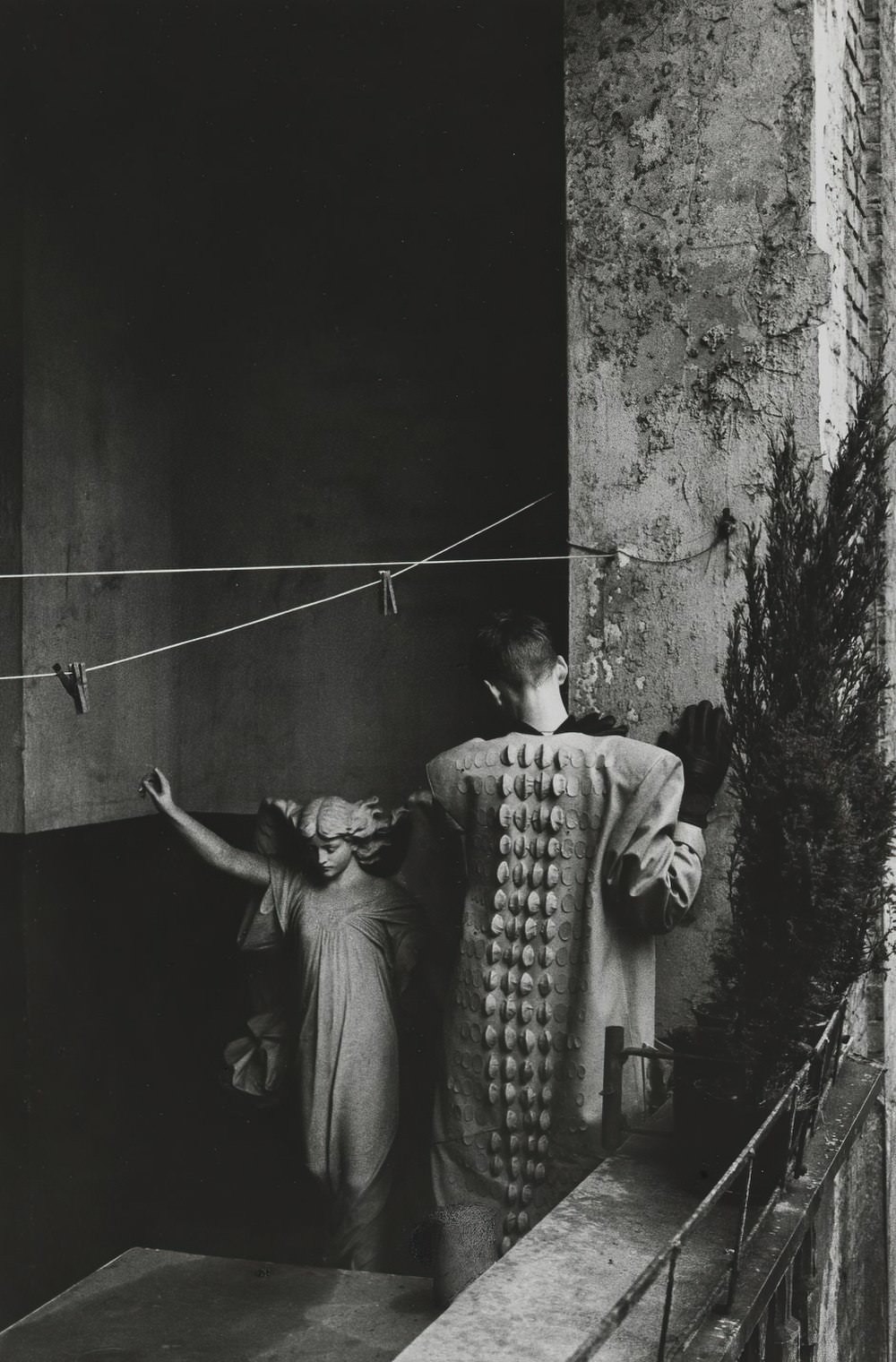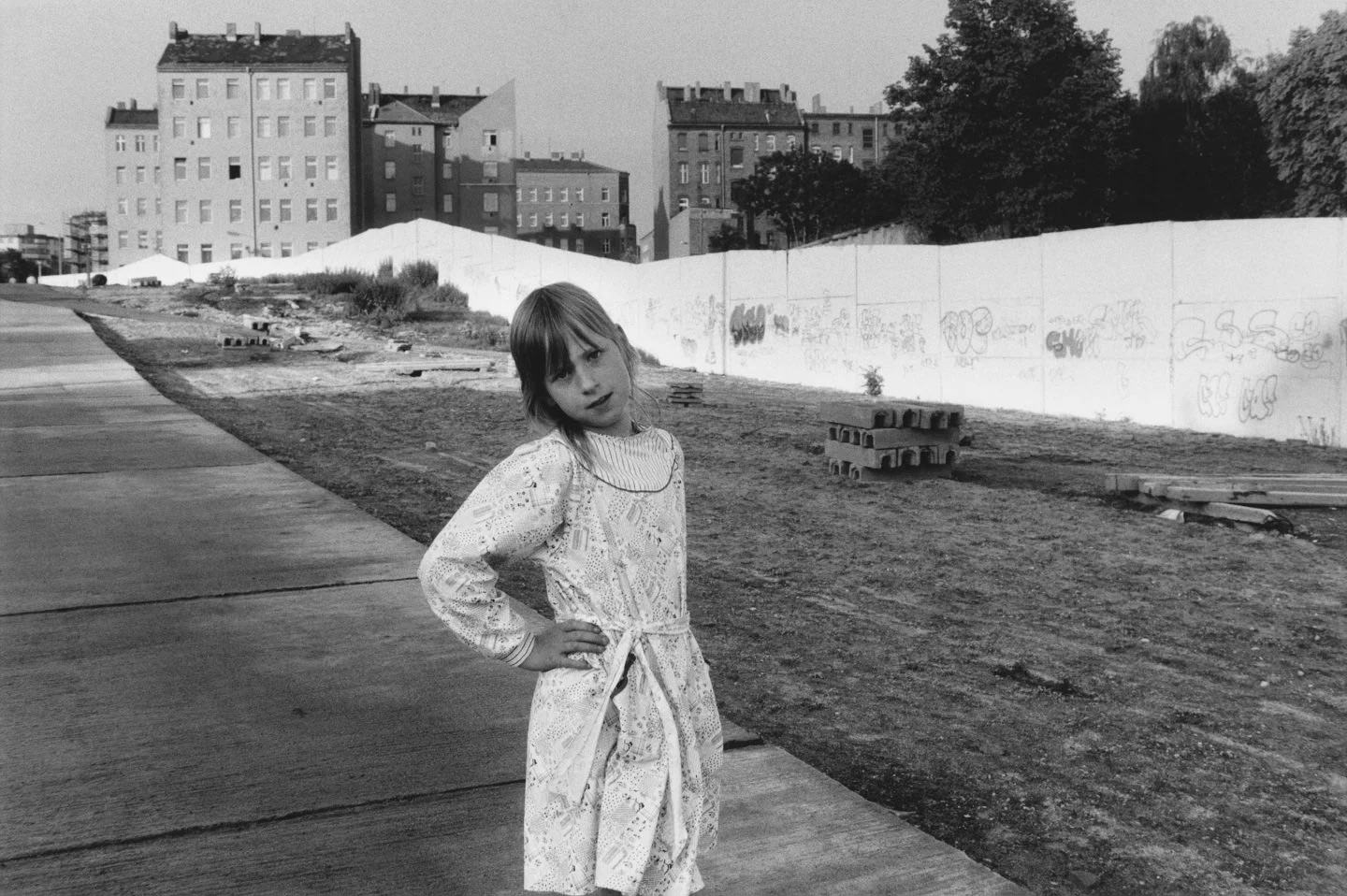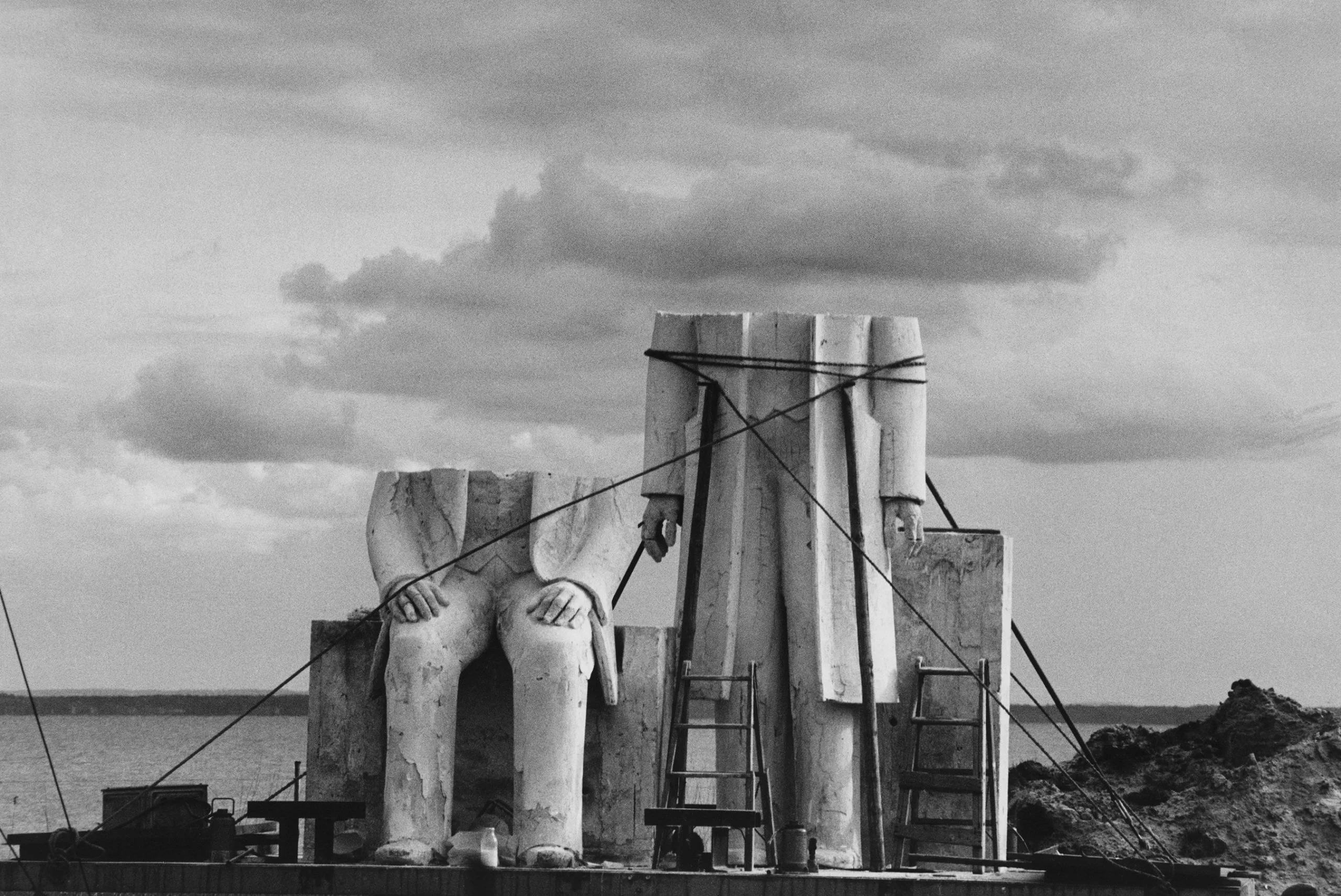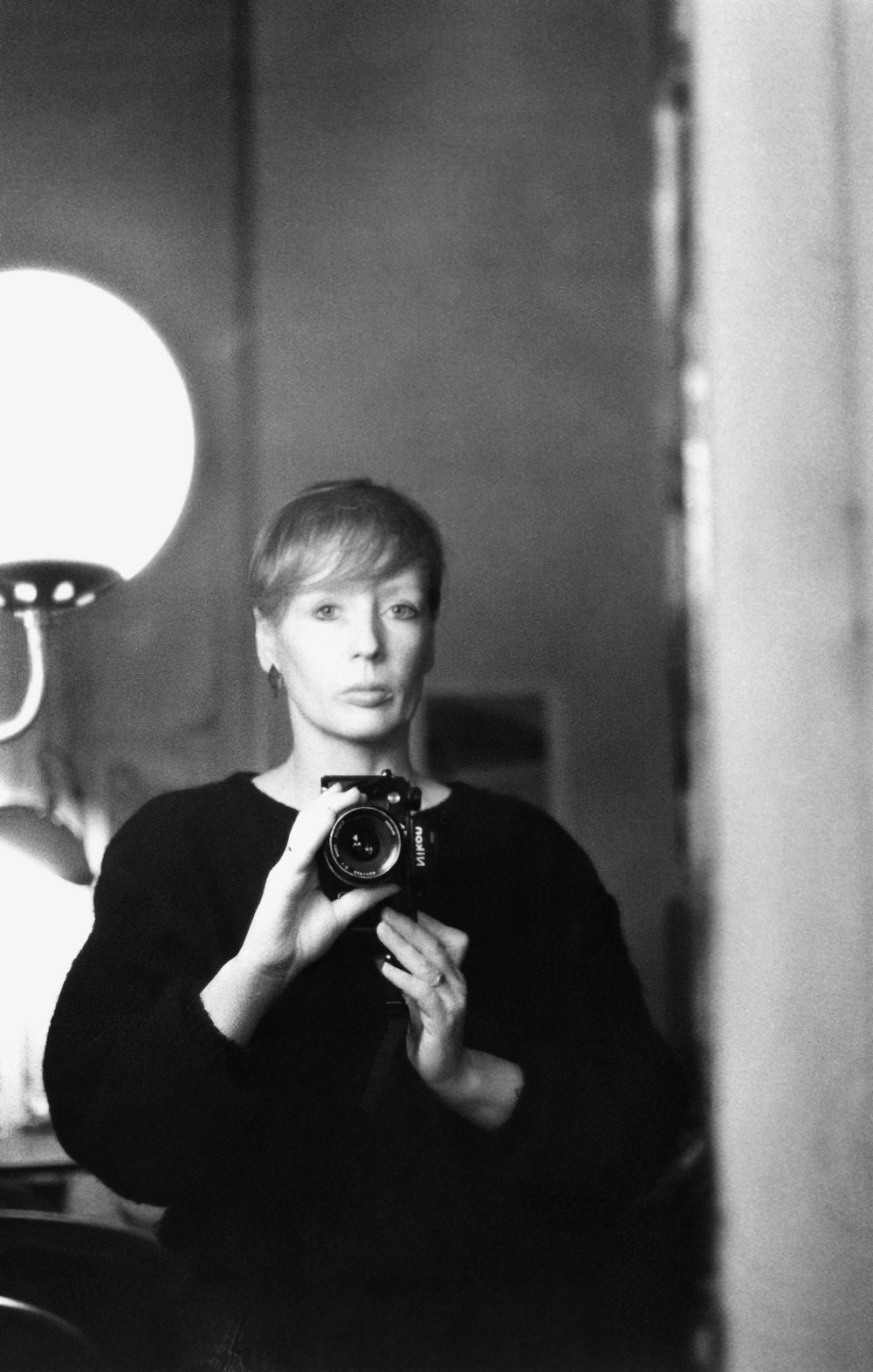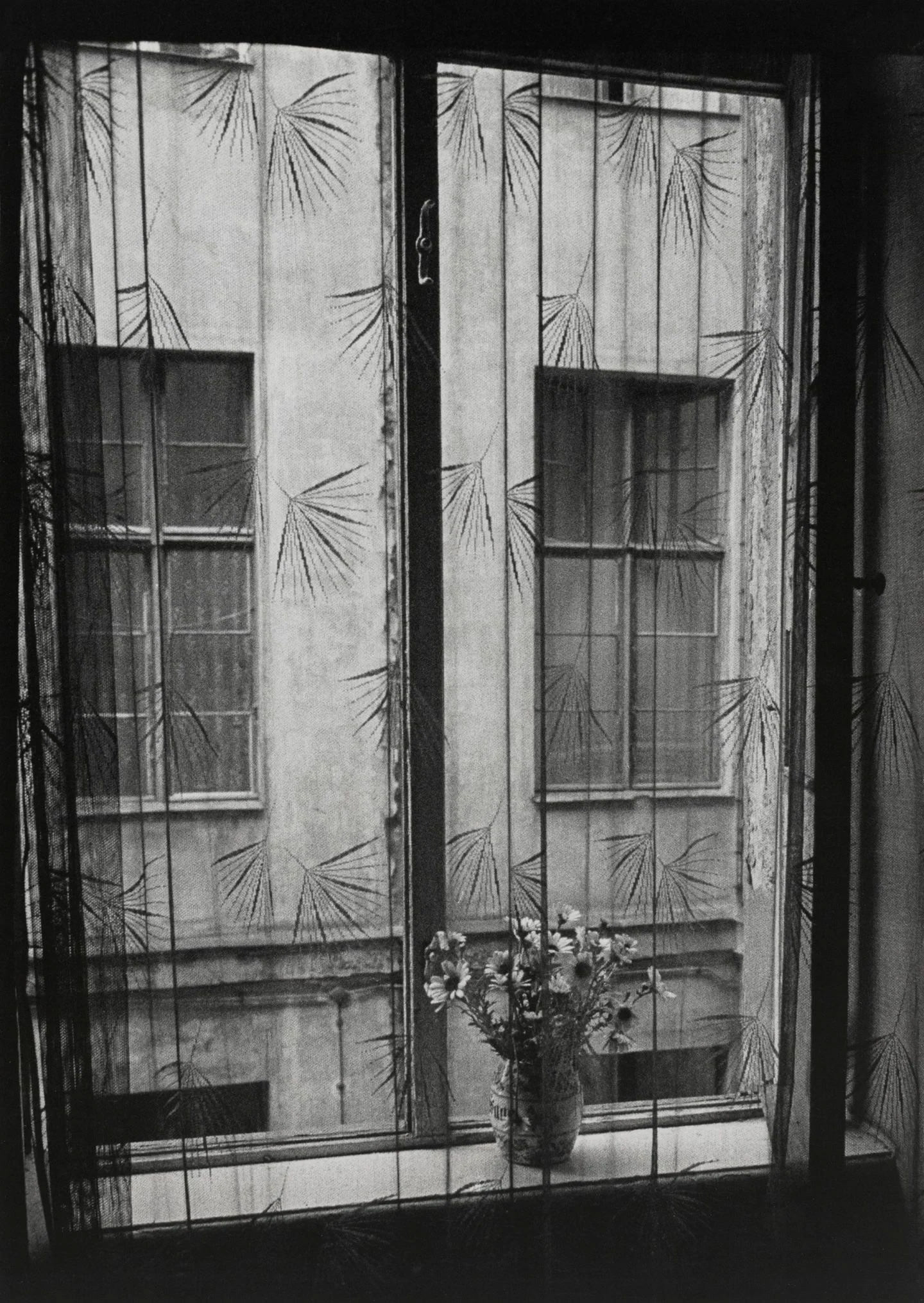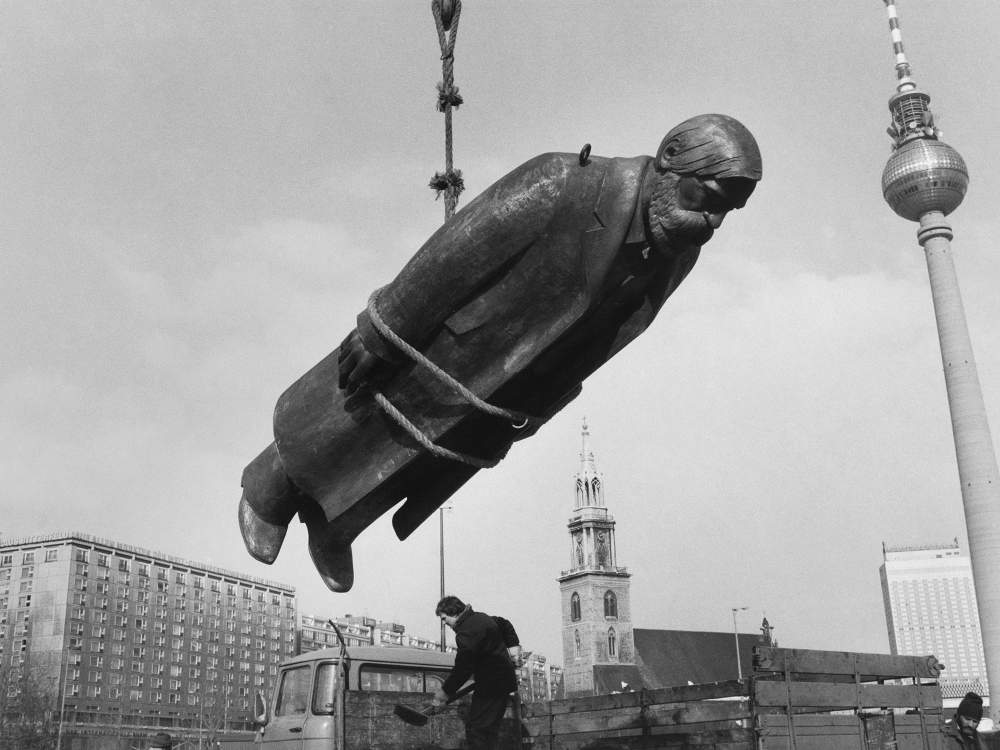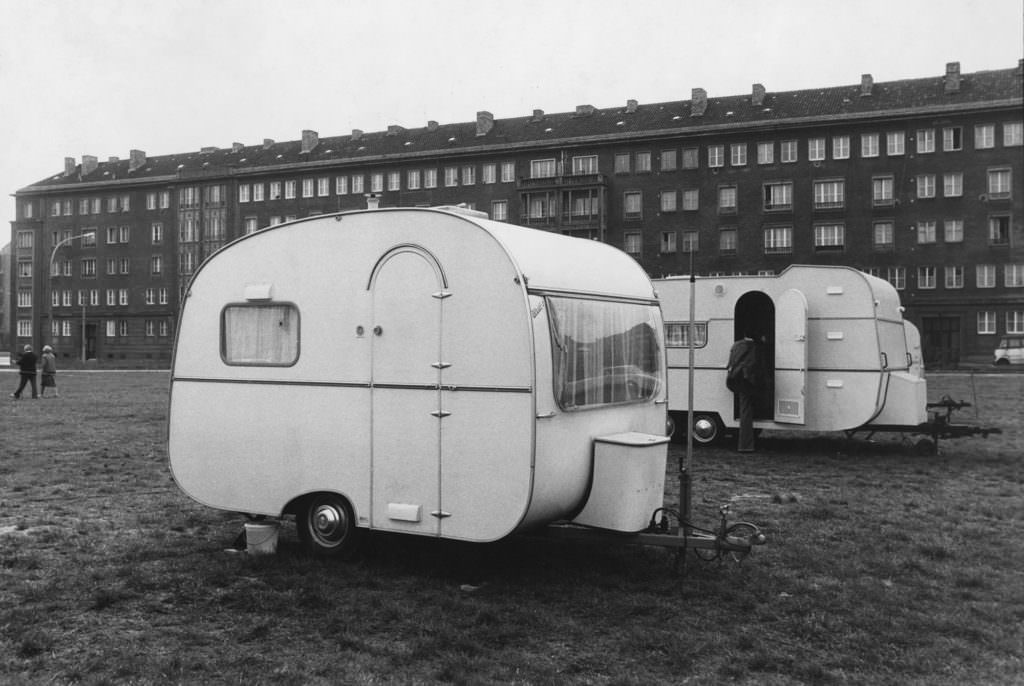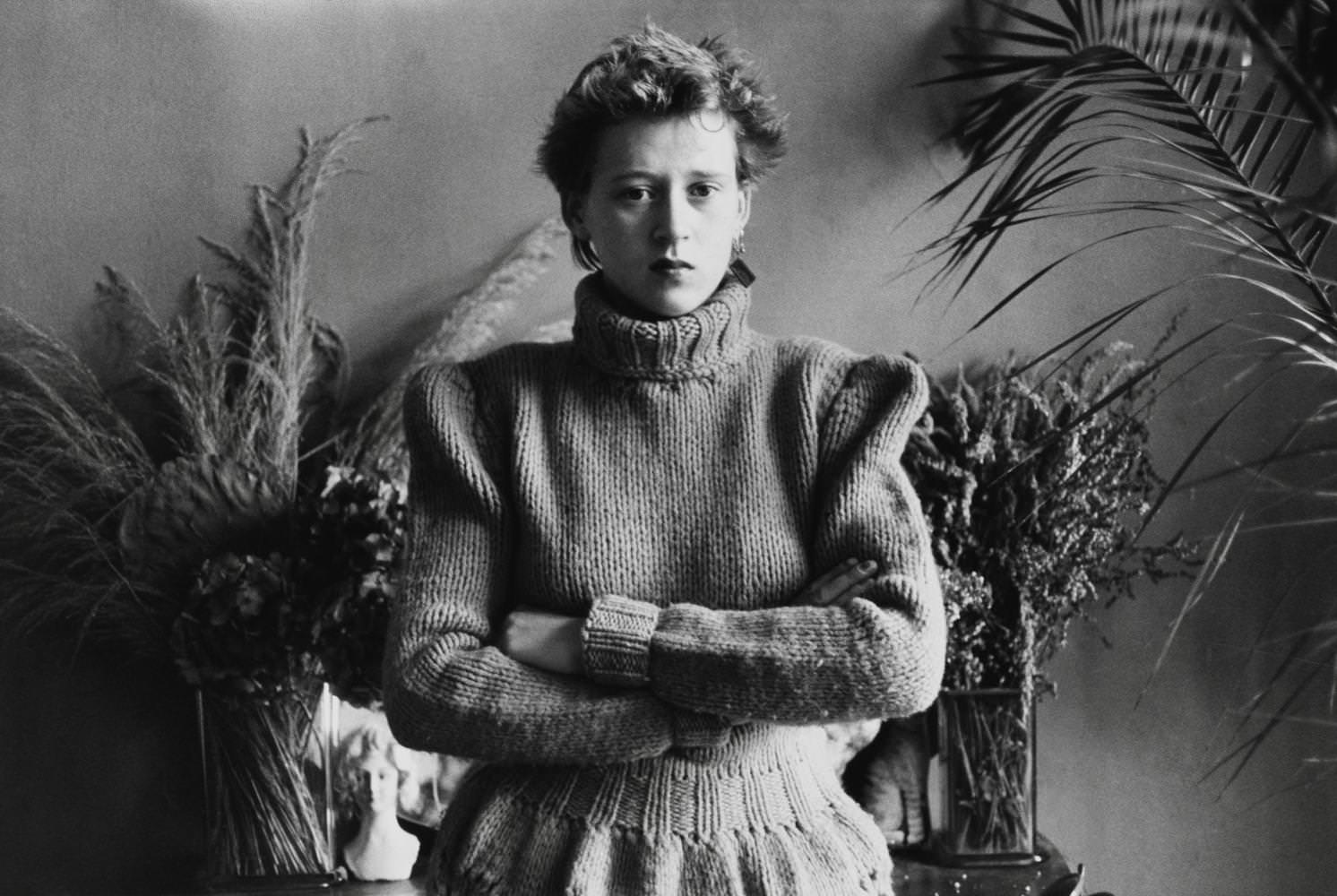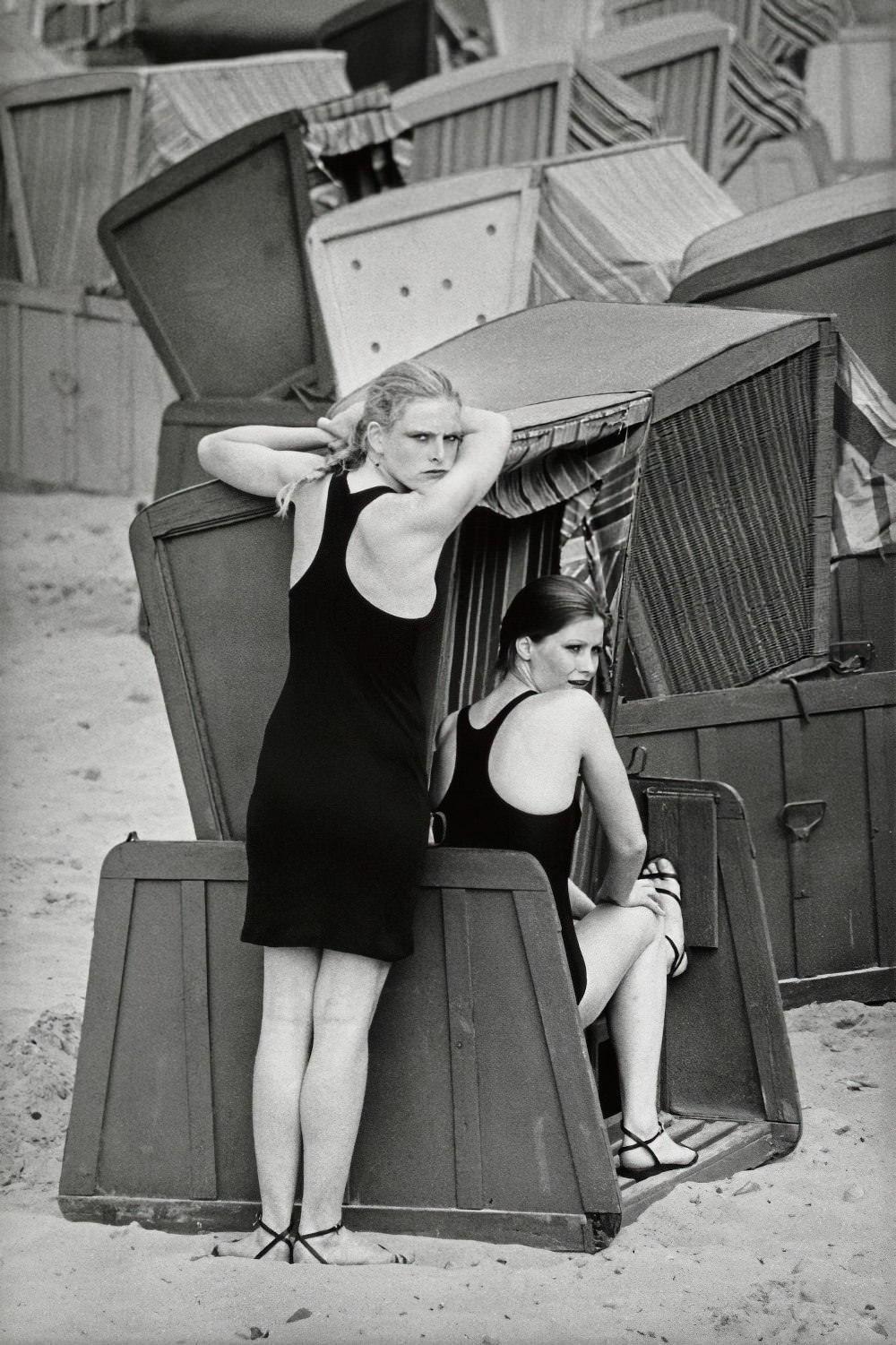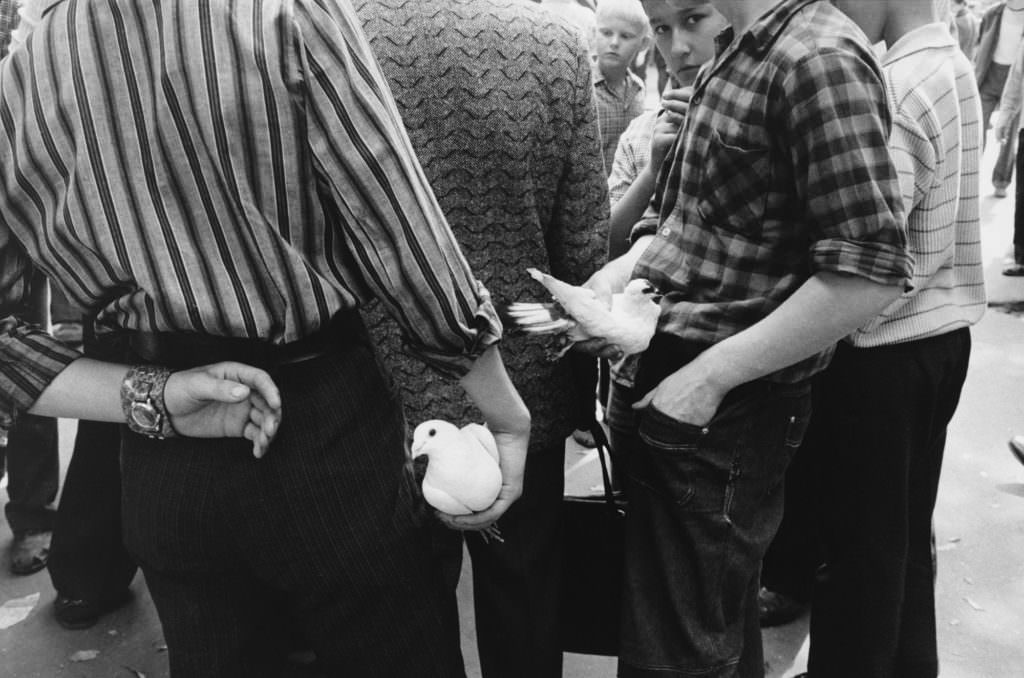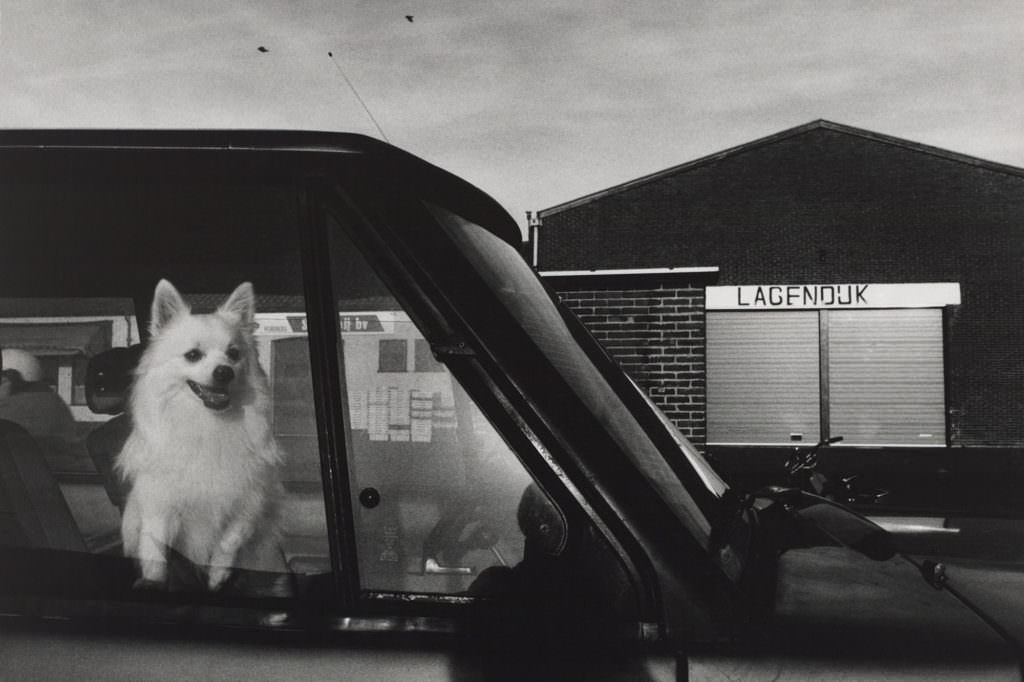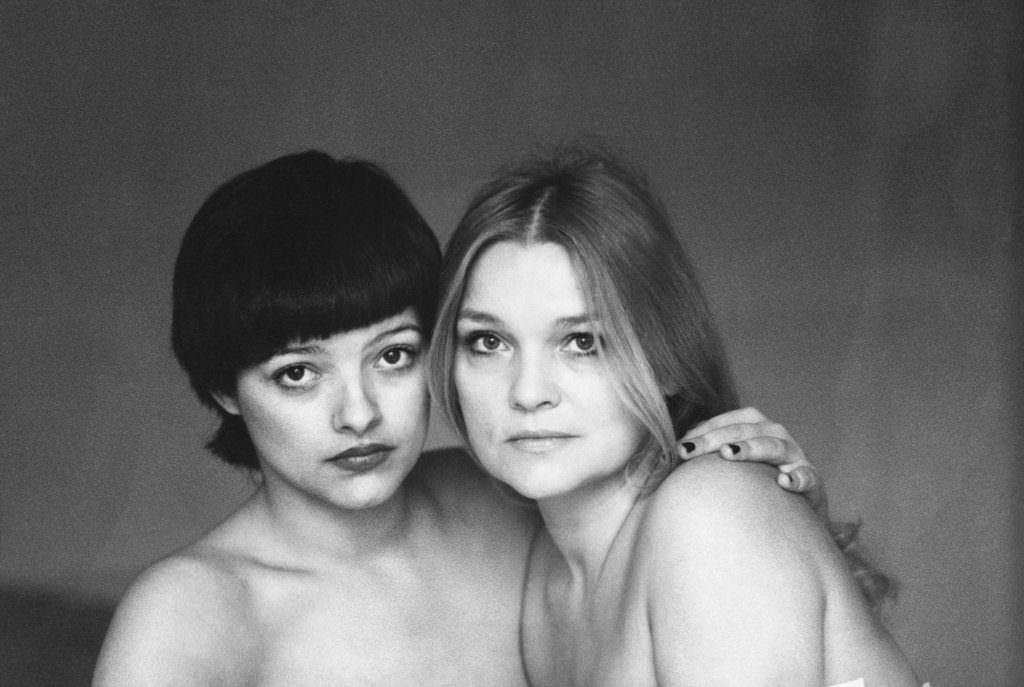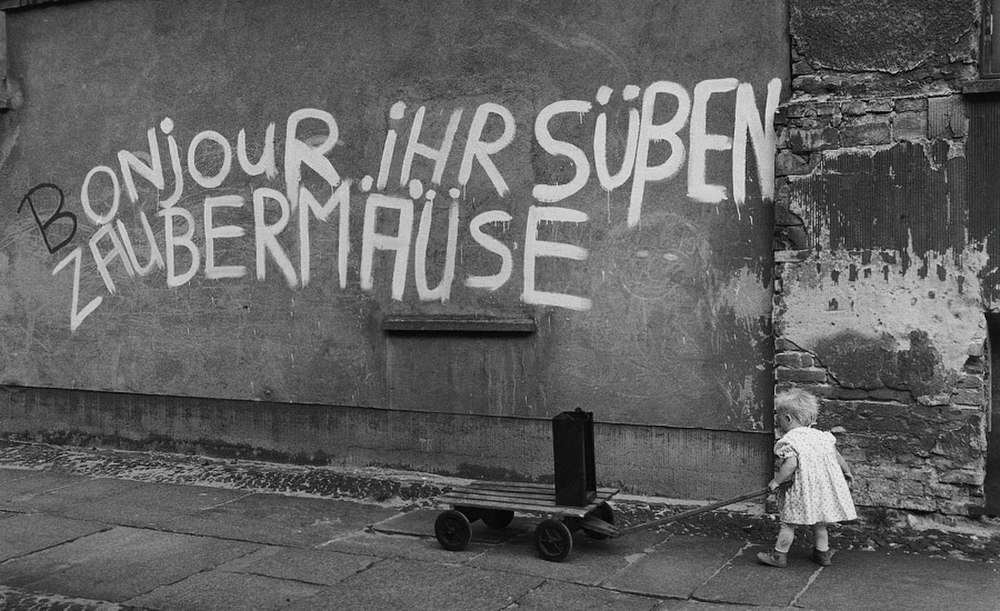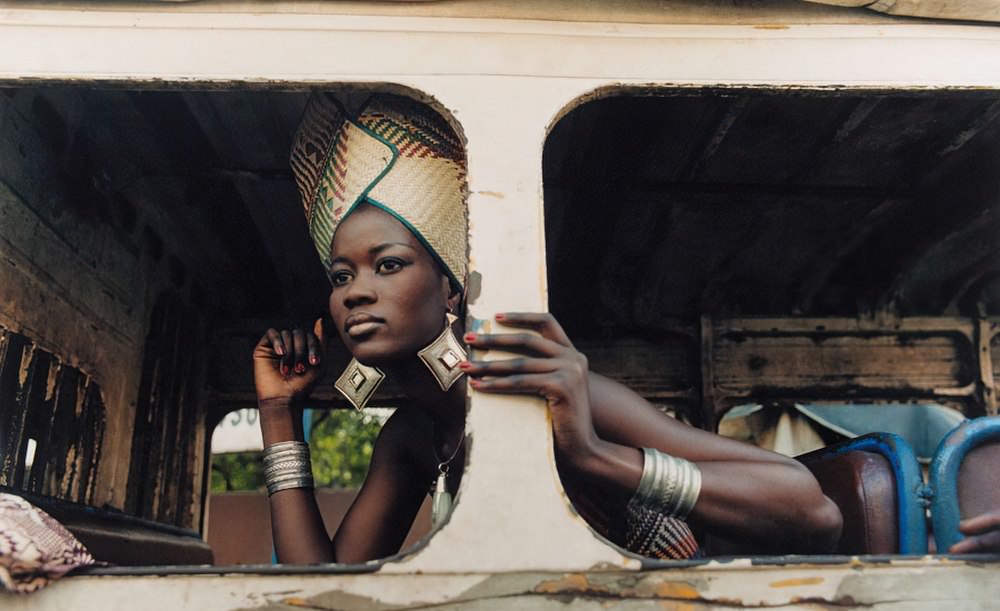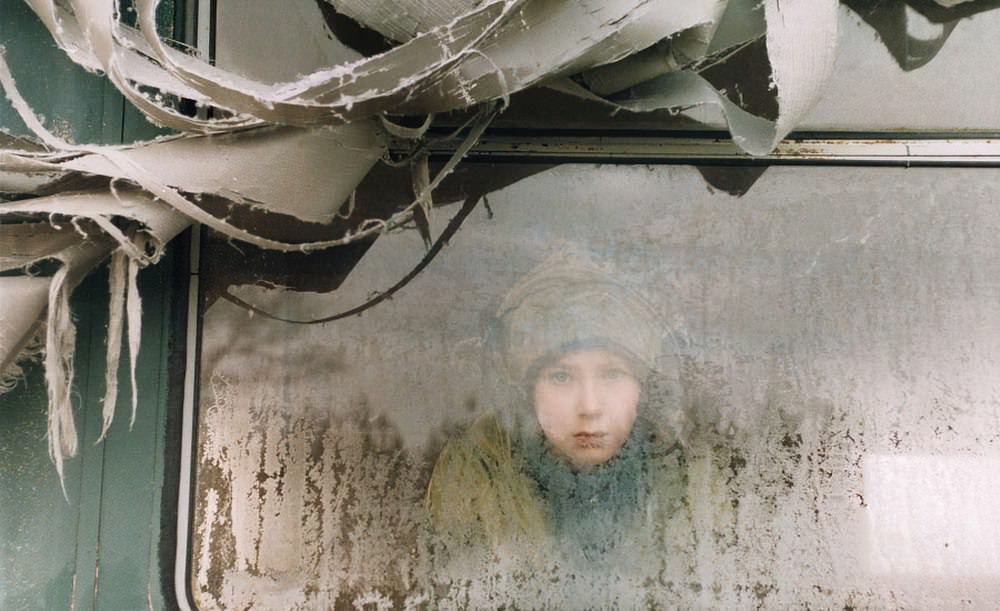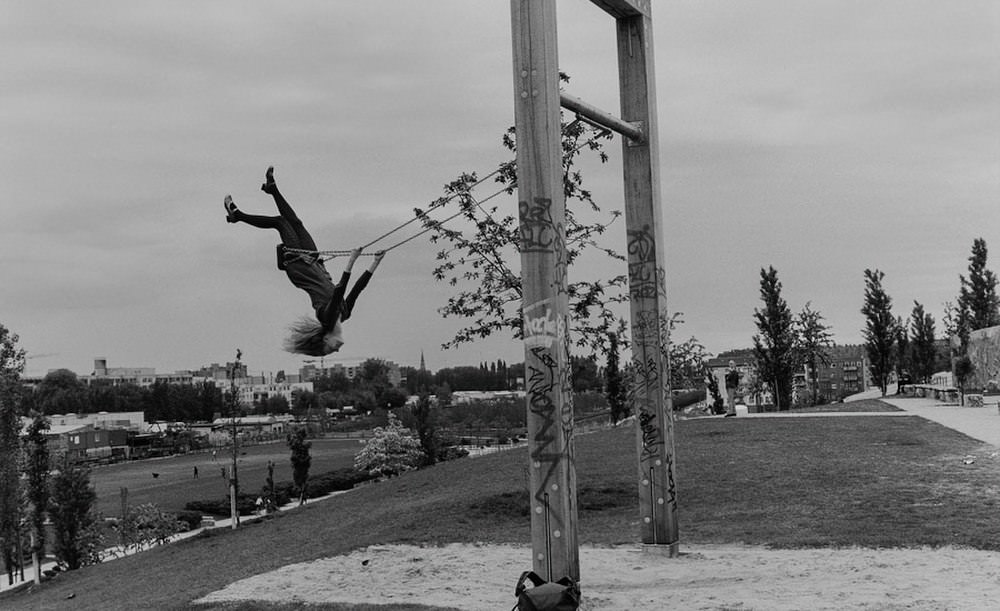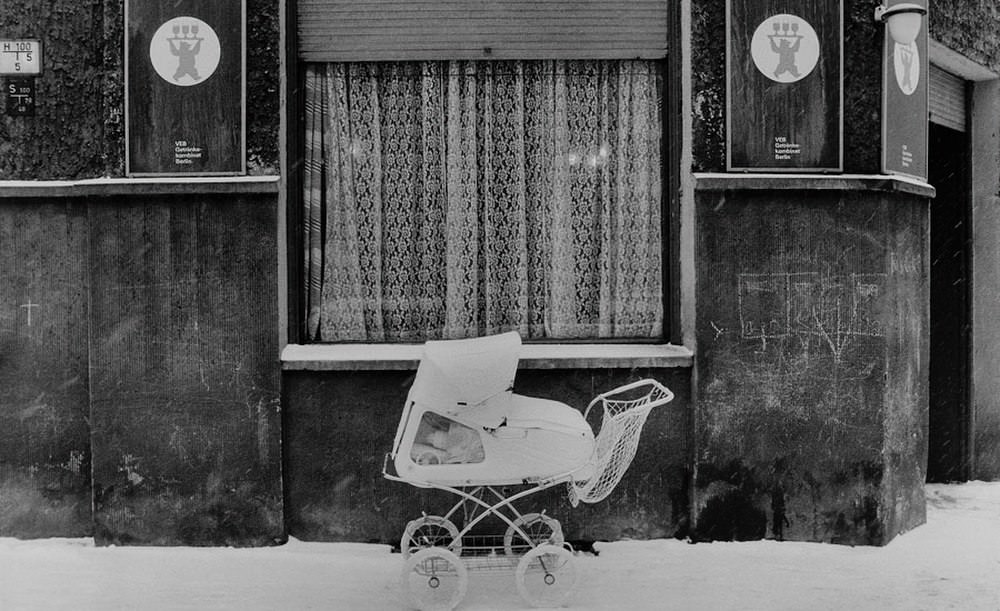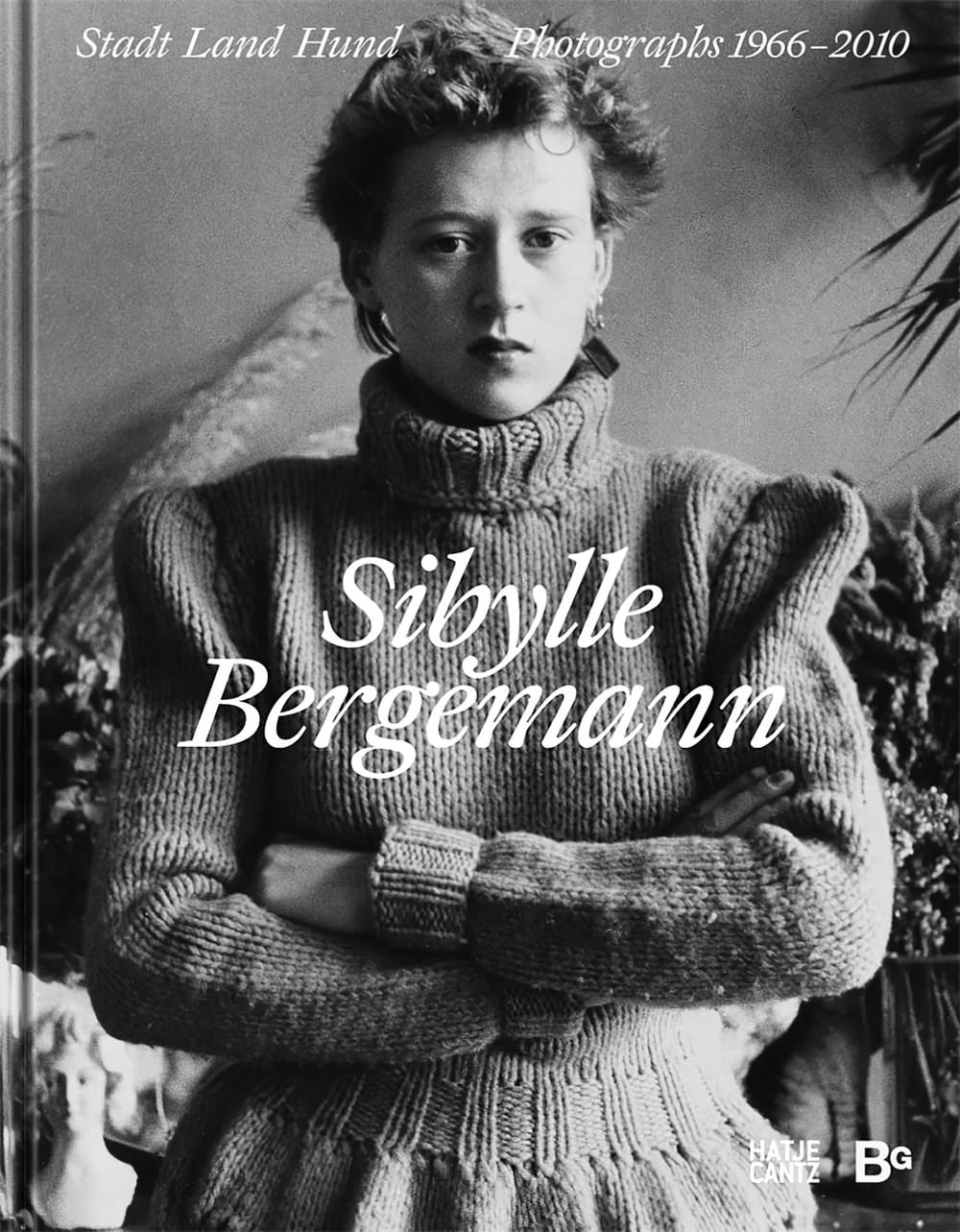Sibylle Bergemann: Town and Country and Dogs Photographs 1966–2010
Sibylle Bergemann (1941–2010) was one of Germany’s best-known photographers. During her Berlin-based career lasting more than four decades, she produced an outstanding œuvre ranging from urban, fashion and portrait photography to essay-style reportage. Recurring motifs are cities, women and – over and again – dogs. A yearning for far-off places was a major factor in her photographic practice around the globe: Dakar, Moscow, New York and Paris were among her destinations.
With a selection of over 200 photographs, 30 of them so far unpublished, this exhibition places the work of Sibylle Bergemann in a personal context.
Sibylle Bergemann already knew at the age of fifteen that she wanted to be a photographer, but in 1958 she began training for a clerical job. She went on to work for various companies as a secretary. From 1965 she was employed by the illustrated monthly “Das Magazin” in Berlin. Here she met the photographer Arno Fischer (1927–2011), her future companion, who was then teaching at the school of fine and applied arts in Weissensee. She joined a stimulating circle of artists and students of fashion and architecture. In the 1970s, professional routine and in-depth exchange with friends and colleagues such as Brigitte Voigt, Arno Fischer and Roger Melis strengthened her independent vision of photography.
Berlin
The city remained a fascination for many years. Picking out apparent opposites, she subtly endowed them with poetic beauty. In the GDR she contrasted the historical court building during demolition with the modern glass façade of the “Haus des Lehrers”. In reunited Germany she placed the dismantling of the Palace of the Republic, formerly a cultural symbol of the GDR, against the neo-baroque cathedral behind it. She photographed people in the city from the subjective perspective of an observer, sitting them in their social milieu or in an urban habitat.
As a general practice, Bergemann sought to defend her artistic autonomy and her personal style beyond the visual canon ordained by the Party, although without risking a publication ban. Her work was included in major exhibitions, such as the East German “Porträtfotoschau” (1971, 1981, 1986) and the 9th and 10th Art Exhibitions of the GDR (1982/83, 1987/88). In the 1970s, she published texts and images in the magazine “Fotografie”, an organ of the Central Photography Commission (ZKF). Here, in 1973, she described photography as “an attitude to people and their relationships, to things and their connections, that is perceived and communicated sensually”. Many of her photographs appeared in the more free-thinking periodicals such as “Das Magazin”, “Sonntag” and “Sibylle”.
One influence on Bergemann was French photography with proponents such as Eugène Atget and Édouard Boubat, and she made repeated efforts in the GDR to obtain a visa for France. She recognised her own people-centered ethos in “The Family of Man”, the traveling exhibition (1955, New York and Berlin) curated by Edward Steichen, which was accompanied by a catalog. This confirmed to her that there was scope within cultural and public policy to establish photography without renouncing a belief in individual authorship.
For her best-known series “The Monument” (1975–1986) she devised unconventional visual strategies of her own. For eleven years, initially motivated by friendship and later commissioned by the East German Ministry of Culture, she visited the sculptor Ludwig Engelhardt (1924–2001) in his studio on Usedom. She witnessed the evolution of his statues for the Marx Engels Forum in Berlin, a process framed by ideology and debate. Ultimately Bergemann selected images that are at once unique and emblematic: fragmented bodies, geometric shapes and versatile materials. After the Berlin Wall came down, the floating figure of Friedrich Engels suspended from a crane was often used by the media to symbolize the end of the GDR.
Women
Images of women are crucial to Bergemann’s œuvre. Many are actors, artists, writers and fashion models, portrayed by the photographer from her own female perspective. The pose and expression of the sitter are sometimes humorous and defiant, sometimes relaxed and proud. She wanted to “bring reality into the pictures,” she declared in 1994. A fleeting present haunts her fashion photographs, too. Choreographed studio photography, in any case not widespread in the GDR, did not appeal to her. She wanted situational fashion recorded in natural settings. In 1993, in an interview with the former “Sibylle” editor Dorothea Melis, she commented: “Weather and light are always a risk, but improvising often generates unexpectedly beautiful images.” Nevertheless, she was methodical about her conceptual preparation for these fashion series. During the sessions Bergemann directed and arranged her models. “[W]ith fashion, she says in 2007, “you have to know exactly what you want, and you have to tell people what it is.”
New departures
When Germany united, Bergemann re-affirmed her photographic autonomy. In October 1990 she teamed up with Harald Hauswald, Ute Mahler, Werner Mahler, Jens Rötzsch, Thomas Sandberg and Harf Zimmermann to found OSTKREUZ, the “agency for photographers”. Their aim was to remain independent in the commercial Western environment by supporting each other and managing their own image rights.
From the 1990s, Bergemann was also given commissions by periodicals like “Zeit-Magazin”, “Stern” and “The New York Times Magazine”, and from 1997 by “Geo”. When she traveled to Yemen in 1999 for her first “GEO” reportage, the impact on her work was enduring. Her career advanced by extending to color, which was all but essential in international picture journalism.
Bergemann enlarged her color prints personally, spending hours in the darkroom: “otherwise they aren’t my pictures’ ‘ (2007). Her missions for “Geo” up until 2010 included Ghana, Mali, Portugal and Senegal. In Dakar, in 2001, she photographed collections by the Senegalese fashion designer Oumou Sy. “You cannot take good pictures by force, only take receipt of them,” acknowledged “Geo” journalist Johanna Wieland when describing Bergemann’s technique. For more than forty years, Bergemann traveled the world in pursuit of that quest. She almost always had at least one camera with her. Whether fashion, portraiture or reportage, on her own initiative or on commission – she followed her talent for translating the quintessence of her perceptions from observation into photography. The project has been funded by the Friends of the Berlinische Galerie and organized in partnership with the Sibylle Bergemann Estate.
Catalogue
Edited by the Berlinische Galerie: Thomas Köhler and Katia Reich. With contributions by Susanne Altmann, Bertram Kaschek, Anne Pfautsch, Katia Reich, Jan Wenzel, Frieda von Wild and Lily von Wild. Designed by Büro Otto Sauhaus. Published by Hatje Cantz Verlag, German/English, 264 pages, 250 illustrations.
Podcast
An audio feature in four episodes about the photographer Sibylle Bergemann will be available in German at the exhibition and as a podcast on the Berlinische Galerie website and from Spotify.
https://berlinischegalerie.de/en/bergemann-podcast/
Sibylle Bergemann: Town and Country and Dogs Photographs 1966–2010
24.6.22 – 10.10.22
Berlinische Galerie – Berlin – Germany

